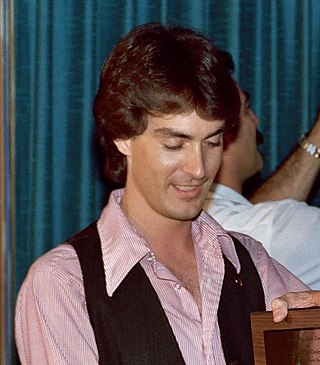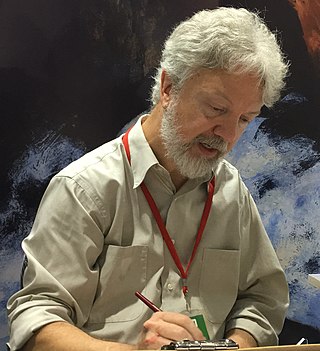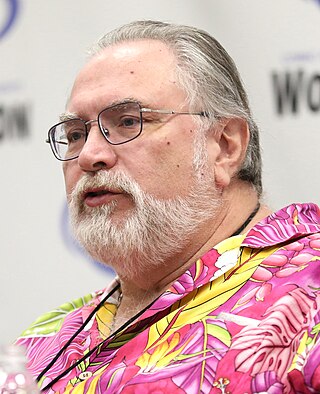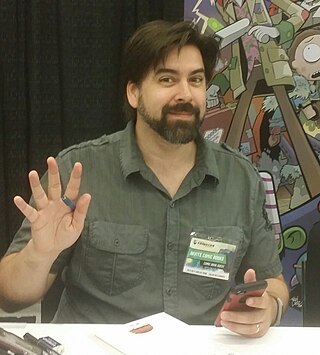Sam Kieth is an American comics artist and writer, best known as the creator of The Maxx and Zero Girl.

IDW Publishing is an American publisher of comic books, graphic novels, art books, and comic strip collections. It was founded in 1999 as the publishing division of Idea and Design Works, LLC (IDW) and is recognized as the fifth-largest comic book publisher in the United States, behind Marvel, DC, Dark Horse, and Image Comics, ahead of other comic book publishers such as Archie, Boom!, Dynamite, Valiant, and Oni Press. The company is known for its licensed comic book adaptations of films, television shows, video games, and cartoons.
Jackson "Butch" Guice is an American comics artist who has worked in the comics industry since the 1980s.
In comics in the United States, a trade paperback is a collection of stories originally published in comic books, reprinted in book format, usually presenting either a complete miniseries, a story arc from a single title, or a series of stories with an arc or common theme.
Godzilla has appeared in a range of comic books that have been published in Japan and the United States.

Dave Lee Stevens was an American illustrator and comics artist. He was most famous for creating The Rocketeer comic book and film character, and for his pin-up style "glamour art" illustrations, especially of model Bettie Page. He was the first to win Comic-Con International's Russ Manning Most Promising Newcomer Award in 1982, and received both an Inkpot Award and the Kirby Award for Best Graphic Album in 1986.

Darwyn Cooke was a Canadian comics artist, writer, cartoonist, and animator who worked on the comic books Catwoman, DC: The New Frontier, The Spirit and Richard Stark's Parker: The Hunter. His work has been honoured with numerous Eisner, Harvey, and Joe Shuster Awards.

Ryan North is a Canadian writer and computer programmer.

Scott Hampton is an American comic book artist known for his painted artwork. He is the brother of fellow comics-creator Bo Hampton.

Jonathan Maberry is an American suspense author, anthology editor, comic book writer, magazine feature writer, playwright, content creator and writing teacher/lecturer. He was named one of the Today's Top Ten Horror Writers.

Joe Harris is an American comic book writer and screenwriter. He made his big screen debut in 2003 with his screenplay for the Sony Pictures release Darkness Falls.

Star Slammers is an American comic book series written and drawn by Walt Simonson. A science fiction story about a group of mercenaries, the series was Simonson's first foray into comics and led to his getting professional work in the comic book industry. Simonson revisited Star Slammers throughout his career, publishing it through various publishers over the decades, including Marvel Comics, Malibu Comics, Dark Horse Comics, and IDW Publishing.

Troy Little is a Canadian cartoonist working in comic books and animation. He began self publishing with Chiaroscuro, a graphic novel that was developed between 2000 and 2005 under his Meanwhile Studios imprint. After winning two grants and being praised by Dave Sim, Chiaroscuro vol. 1 was released in 2007 by IDW Publishing.
Nick Percival is a British graphic artist and graphic novelist primarily known for his published comic book, concept artwork and career in computer animation directing.

Locke & Key is an American comic book series written by Joe Hill, illustrated by Gabriel Rodríguez, and published by IDW Publishing.

Noah Van Sciver is an independent American cartoonist who resides in Columbia, South Carolina.
Adventures in Oz is a collection of five graphic novels by Eric Shanower set in the Land of Oz. They were originally published separately from 1986 to 1992. The first four, The Enchanted Apples of Oz (1986), The Secret Island of Oz (1986), The Ice King of Oz (1987), and The Forgotten Forest of Oz (1988) were published by First Comics. The fifth, The Blue Witch of Oz, was published by Dark Horse Comics in 1992. The hardcover edition contained an extensive appendix by Shanower about his Oz comic work, including previously unseen artwork and comics, as well as alternate endings to some stories.

The Mike Wieringo Comic Book Industry Awards, commonly shortened to the Ringo Awards, are prizes given for achievement in comic books. They are named in honor of artist Mike Wieringo and they were founded by the Reisterstown, Maryland–based Cards, Comics, & Collectibles shop alongside the Ringo Awards Committee in 2017, their ceremony meant to succeed the Harvey Awards which left the Baltimore Comic-Con as its venue in 2016.

From 2006 to 2019, several comic book adaptations have been printed, based on the Goosebumps books by R. L. Stine. The first was Creepy Creatures, a graphic novel compilation book in the Goosebumps Graphix line. This series began when Stine starting receiving letters from fans asking him to write more Goosebumps books. The comics have been adaptations from 10 original books and new stories from various artists. IDW Publishing would produce Goosebumps comics that were more original stories but contain characters from the books.













